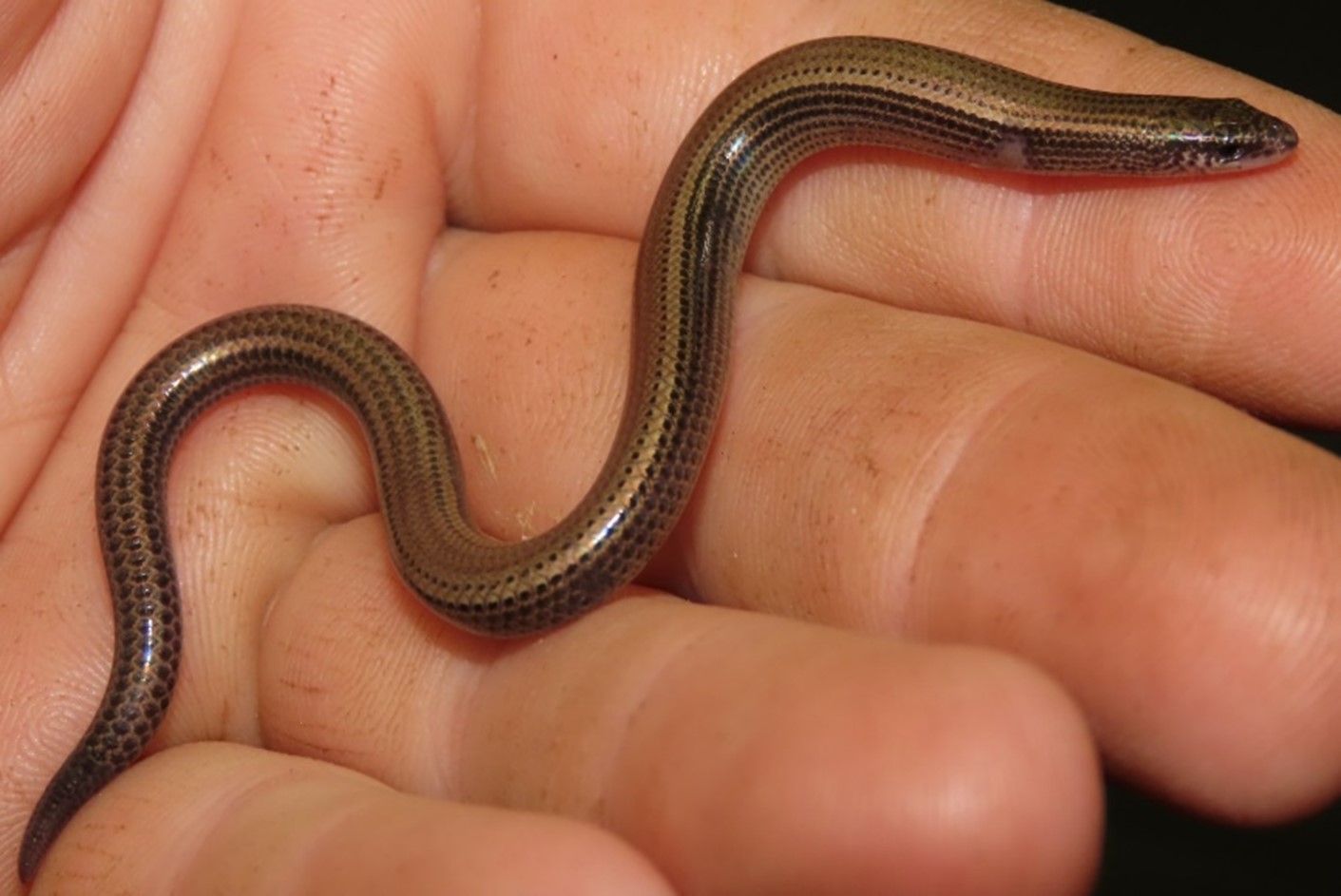EWT receives R478 892 to revive Durban’s Critically Endangered Dwarf Burrowing Skink

The Endangered Wildlife Trust’s Threatened Amphibian Programme has received $25 000 from the Mohamed bin Zayed Species Conservation Fund to support a project to revive Durban’s Critically Endangered Dwarf Burrowing Skink at a key habitat site within the species restricted range.
The Durban Dwarf Burrowing Skink (Scelotes inornatus) – primarily a fossorial limbless species – is one of South Africa’s most threatened reptiles. The aim of the project, which starts on 1 March 2024, is to safeguard the last known stronghold of Durban Dwarf Burrowing Skinks, ensuring the viability of species into the future.
The EWT’s Threatened Amphibian Programme (TAP) is the only NGO programme operating in South Africa to include frogs as a conservation focus. Using threatened frog species as flagships for the conservation of important freshwater and terrestrial habitats, a species and habitat monitoring exercise has been implemented alongside initiating habitat protection strategies at key amphibian areas, improving management of important amphibian habitat, using research to support conservation action, and promoting social change to galvanise behavioural change towards frogs and to recognise the importance of their habitats in South Africa.
More recently the EWT’s approach has broadened to include reptiles. The project to revive Durban’s Dwarf Burrowing Skink follows a similar initiative to protect vital habitat for the Endangered Albany Adder. The project to revive the Skinks will focus on a reptile confined to the Durban area.
Historically, it is thought that the species could be found throughout Durban’s coastline. However, the species is on the brink of extinction due to a series of anthropomorphic challenges. The historical population north of Durban is believed to be extinct, and remaining surviving populations to the south are scattered over several extremely small habitat fragments (ranging from 0.01 – 1.7 km2) and totalling a mere 5 km2. As a result of this limited distribution, the species is referred to as a ‘micro-endemic’.
Between 2015 and 2018, the EWT’s Threatened Amphibian Programme (TAP) carried out a substantial invasive plant-clearing initiative. Approximately 310 hectares of invasive plants within the coastal dune areas of Durban, including the should-be Critically Endangered Sandy Coastal Belt Grassland where the Burrowing Skink resides, have been cleared and maintained. This habitat restoration work has contributed to improving the conditions for the species, but more work is required.

In 2018, a crucial partnership emerged between Ezemvelo KwaZulu-Natal Wildlife (EKZNW), the provincial conservation authority, and the Pan African Association of Zoos and Aquaria (PAAZA)-accredited Johannesburg Zoo to breed the species in captivity to bolster the number of individuals. The project will help ensure the survival of reintroduced animals back to their natural range. This is expected to contribute to existing conservation efforts, leading also to the reintroduction of S. inornatus to protected sites, including Treasure Beach. Similarly, the EWT has previously worked with Johannesburg Zoo to successfully reintroduce the Endangered Pickersgill’s Reed Frog to wetlands through the Durban metro.
Treasure Beach falls within the National Protected Areas Expansion Strategy and neighbours the Bluff Nature Reserve, a 45-hectare formally protected area. Merging Treasure Beach with Bluff Nature Reserve to formally protect the entire area would effectively increase the protected area by 86 hectares and secure S. inornatus populations.
Merging with Bluff Nature Reserve would allow for ongoing management of the entire area by EKZNW, the management authority for Bluff Nature Reserve. In addition, through the established S. inornatus Task Team, partnerships between eThekwini Municipality and EKZNW will be formalised to further support continuous management of the area.
